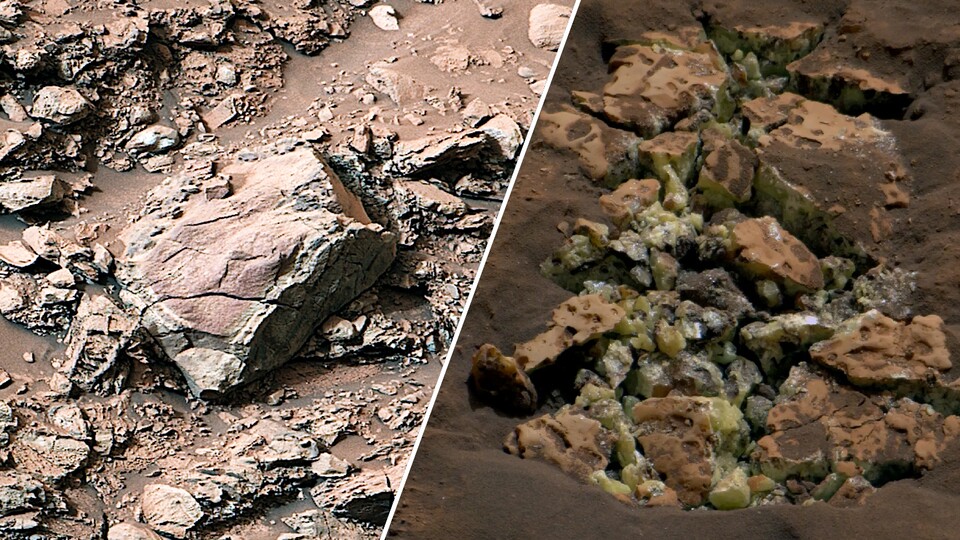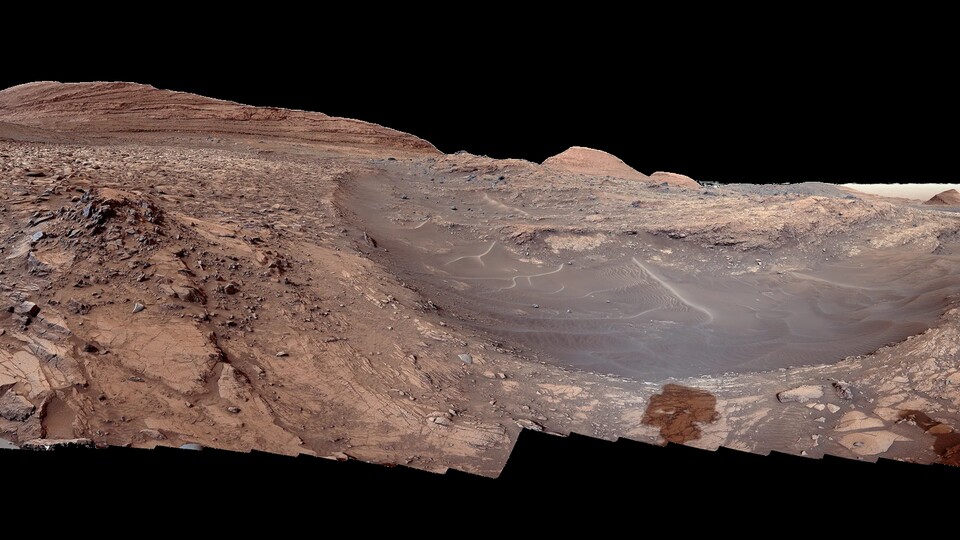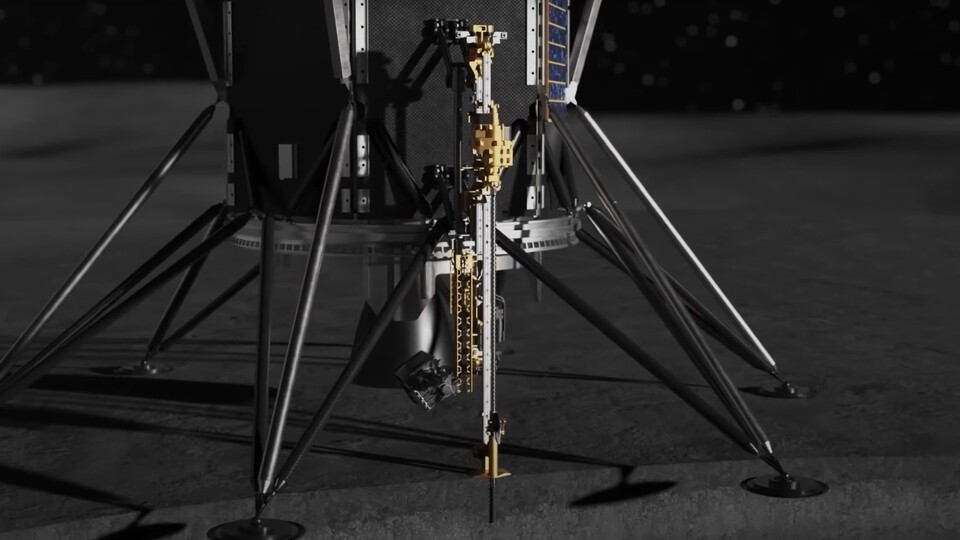
The accidental discovery inside a light-colored rock was also made possible by Curiosity's weight: the Mars rover weighs 900 kilograms. (Image: NASA)
NASA has been exploring the Red Planet's Geddes Vallis Channel with the Mars Curiosity rover since October 2023. Now an unexpected yellow discovery has been made: pure sulfur.
NASA credits the fact that this happened by chance, because Curiosity accidentally broke a rock that had this sulfur inside it when it passed over it.
What makes this discovery so special: Sulfur-based materials aren't unusual for Mars, according to a related NASA report. Pure sulfur, on the other hand, does.
- Accordingly, there are many sulfates or sulfur-containing salts in the Geddes Vallis canal.
- However, this is sulfur mixed with other substances rather than pure sulfur.
- According to NASA, pure sulfur is produced
Only under special circumstances, scientists are not yet aware of the history of this place. [gemeint ist der Mars, Anm. d. Red.] I called
.
Even more amazing is the fact that Curiosity discovered an entire field of these stones, all of which are supposed to contain pure sulfur.
Link to YouTube content
What it looks like on the site: If you want to get a rough idea of the area yourself, you can do so in the 360-degree video from NASA embedded above. Once you've started, hold down the left mouse button and move the mouse to change the view direction.
Scientists are excited
Ashwin Vasavada, Curiosity project scientist at NASA's Jet Propulsion Laboratory in California, describes the significance of this discovery in these words:
Finding a field of stones made of pure sulfur is like finding an oasis in the desert. It shouldn't be there, so now we have to explain it. Discovering strange and unexpected things is what makes planetary exploration so exciting.
The Mars rover has been in the area in question for ten years: the Geddes Vallis Channel lies beneath Mount Sharp, where Curiosity has been conducting research at its foot since 2014.
According to NASA, the goal is to learn more about the planet's history using different layers of the mountain and to uncover potential nutrients that could make life possible on Mars (if it ever existed there).
Why is the channel so interesting in science?


Curiosity captured this image of the Geddes Vallis Channel on March 31, 2024. Did water play a role in creating the channel? (Image: NASA)
NASA assumes that the canal Through streams of liquid water and debris
They are formed, making them particularly interesting to research.
The canal area in its current form was likely formed partly by floodwaters and partly by landslides. More specifically, NASA says:
These conclusions are based on the stones in the piles: while the stones transported by water currents become rounded like river pebbles, some piles are interspersed with more angular stones, which may have been deposited by dry avalanches.
The main focus is on the role of water. After all, water was a crucial factor in the emergence of life and remains of great importance to Earth today, and this is not in vain. blue planet
he is called.
A stone of a completely different kind that has attracted a lot of attention: Man Uses Strange Stone As Doorstop For 30 Years, Turns Out It's Worth A Fortune


1:39
How do we get water on the moon? NASA expert explains
Further analysis of the stones is already underway.
How pure sulfur plays its role in the arduous and highly exciting process of assembling the Martian mystery remains uncertain at present.
But researchers have high hopes for the yellow treasure that Curiosity may have discovered, and so they want to take a closer look at it:
- As NASA reports, the sulfur rocks shown in the image at the beginning of the article are too small for Curiosity to analyze.
- Fortunately, a much larger rock of the same type was discovered near the rolled stone and bears the name.
mammoth lakes
He was baptized. - Upon drilling its 41st (!) hole in it, Curiosity finally succeeded and was able to take rock samples.
The samples are still awaiting analysis. If NASA gets any more exciting ideas as a result, you'll find them at GameStar Tech.

Lifelong foodaholic. Professional twitter expert. Organizer. Award-winning internet geek. Coffee advocate.

